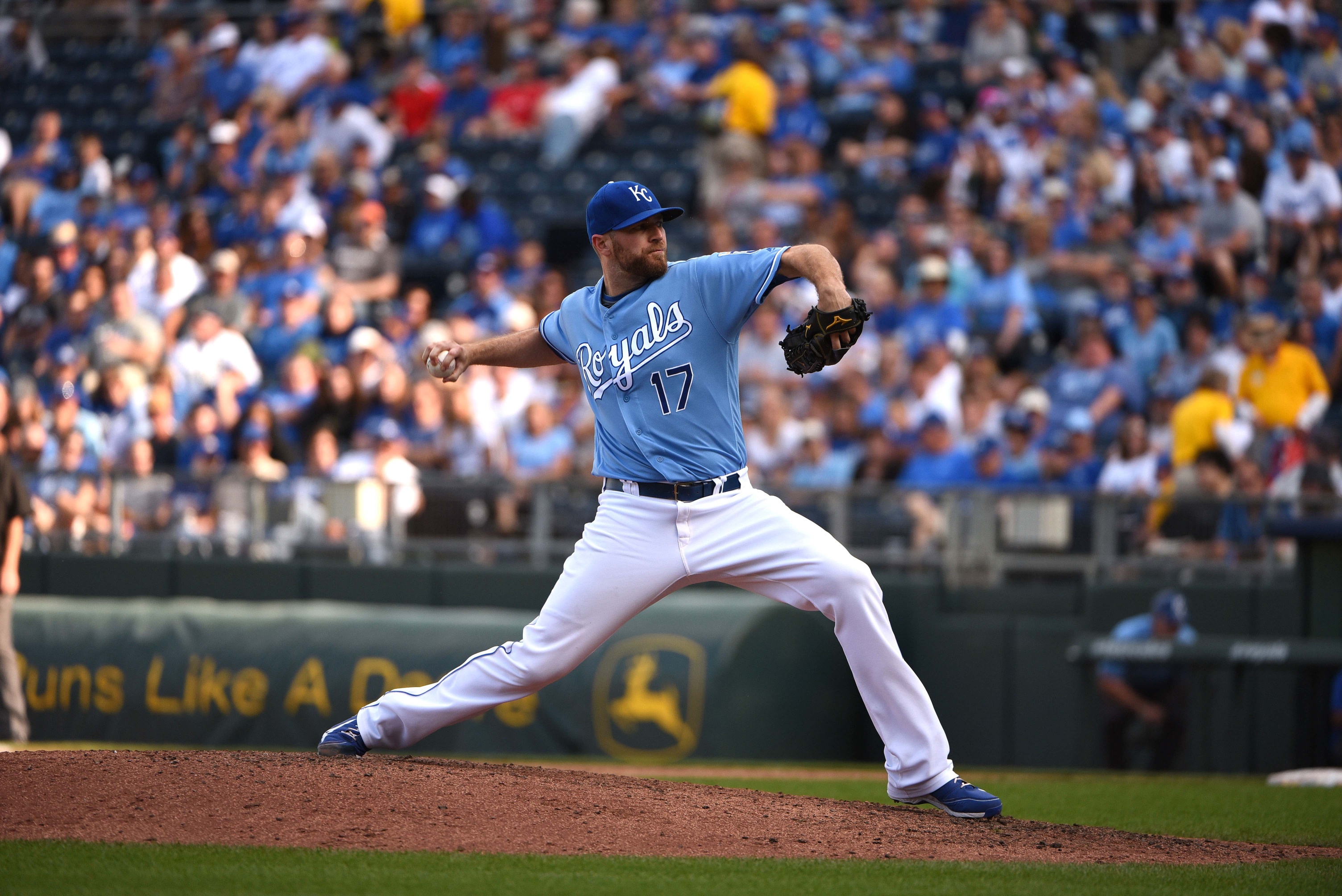Late Tuesday night, at the Winter Meetings in Maryland, the Cubs addressed their most pressing issue for 2017 by acquiring top reliever Wade Davis from Kansas City in exchange for Jorge Soler. With physical exams to be conducted and medical records reviewed—Davis suffered a forearm injury this season and Soler has been off the field with various issues since he began American professional baseball—the deal is complete. Jed Hoyer spoke about Davis Wednesday afternoon, saying, “He checked out great. He looked fantastic and ready to go.”
For a small trade, in terms of players, this is a fascinating deal. Soler was not going to be a significant part of the 2017 Cubs, and managed only 756 plate appearances in two-plus major-league seasons. Speculation mounted every winter for the past several years that Soler would be traded for pitching, with his potential stardom stagnating at the top level, and he is now blocked by Kyle Schwarber, Jason Heyward, and Willson Contreras at the corner outfield positions. While a 24-year-old corner outfielder with big power and a solid approach, despite defensive deficiencies, is a very valuable player to employ, the chances that he would get enough opportunities to blossom into a regular with the Cubs were few. The Royals get a young outfielder with 30-home run power, a solid hit tool, and room to grow.
Davis is one of the top relievers in baseball. Cat Garcia profiled him just yesterday in a piece here at Wrigleyville, and dove into some of the benefits that come with trading for the righty. The first thing to note, however, is that Davis is coming off a year in which he found himself on the disabled list twice for a mild forearm strain. He missed two weeks in early July, and then the whole month of August; his ERA grew by about half a run between the time of his first stint and the end of the season, but he threw scoreless baseball in 12 of 15 outings over that time.
Davis’s cutter flirts with the mid-90s, and his curve is a tight spinner that darts down sharply. It’s the cutter that hitters can’t handle: it gets an unusually high number of both grounders and whiffs. He can pump his fastball at the top of the zone near 100 miles-per-hour, giving him an enviable closer’s arsenal. If there’s cause for concern over Davis’s potential performance next season, it rests with his velocity dip. In his first two seasons as a reliever for the Royals, Davis averaged 96-97 with his fourseamer; in 2016, he averaged 94-95, undoubtedly a function of his forearm issues. He throws that fourseamer between 50 and 60 percent of the time, and works in a dynamite curveball at 15-20 percent and a cutter closer to 30 percent. It’s a mix that suppresses even the best hitters’ abilities, leading to miniscule TAv allowed over the past three seasons of .172, .170, and .198. He rarely allows homers, as well.
The Cubs probably could have gone without acquiring a closer this offseason, and either give Hector Rondon a shot at reclaiming the role or hand it to standout playoff performer Carl Edwards, Jr. As it is, they strengthen an already above average bullpen, giving Rondon, Edwards, and Pedro strop the key innings leading up to the ninth. New lefty Brian Duensing slots into the Travis Wood role, Mike Montgomery moves to the rotation (barring a starter acquisition), and Justin Grimm remains in his middle-inning ace role. It’s a formidable group that should be a strength of the club in 2017.
They lose Soler, who would have provided outfield depth and a solid bench bat, but little more at this point. Having Eloy Jimenez mashing in the minors makes the deal more palatable, as the young outfielder’s ceiling is probably higher than Soler’s, and keeping Soler would have been banking precisely on his ceiling. That the deal is a one-for-one swap is a win for the Cubs, as they retain their top prospects and organizational guys to deal for starting pitching, if they find a match. They also don’t spend the tens of millions of dollars that signing Kenley Jansen would have required, although such a splash was always doubtful. Perhaps the Cubs could have dealt Soler in a trade for starting pitching, the team’s other short- and long-term concern, but the odds are that they found few trade partners with reasonable demands in this starter-barren offseason.
Davis will only be a Cub for one season, with his contract up after 2017 and a big payday on the horizon, but it will be an exciting one on the North Side. Soler has the chance to star for the Royals, getting the plate appearances that he was never destined to garner in Chicago. It’s a win-now trade for the Cubs, while sacrificing no financial flexibility and little in terms of long-term success.
Mourn Jorge’s departure, but don’t mourn for Jorge: Soler leaves the Cubs after five years in the organization and millions of dollars in the bank, and he leaves a legend in the form of a Cubs World Series champion. We’ll always have those dingers in St. Louis last October.
Lead photo courtesy of John Rieger—USA Today Sports
